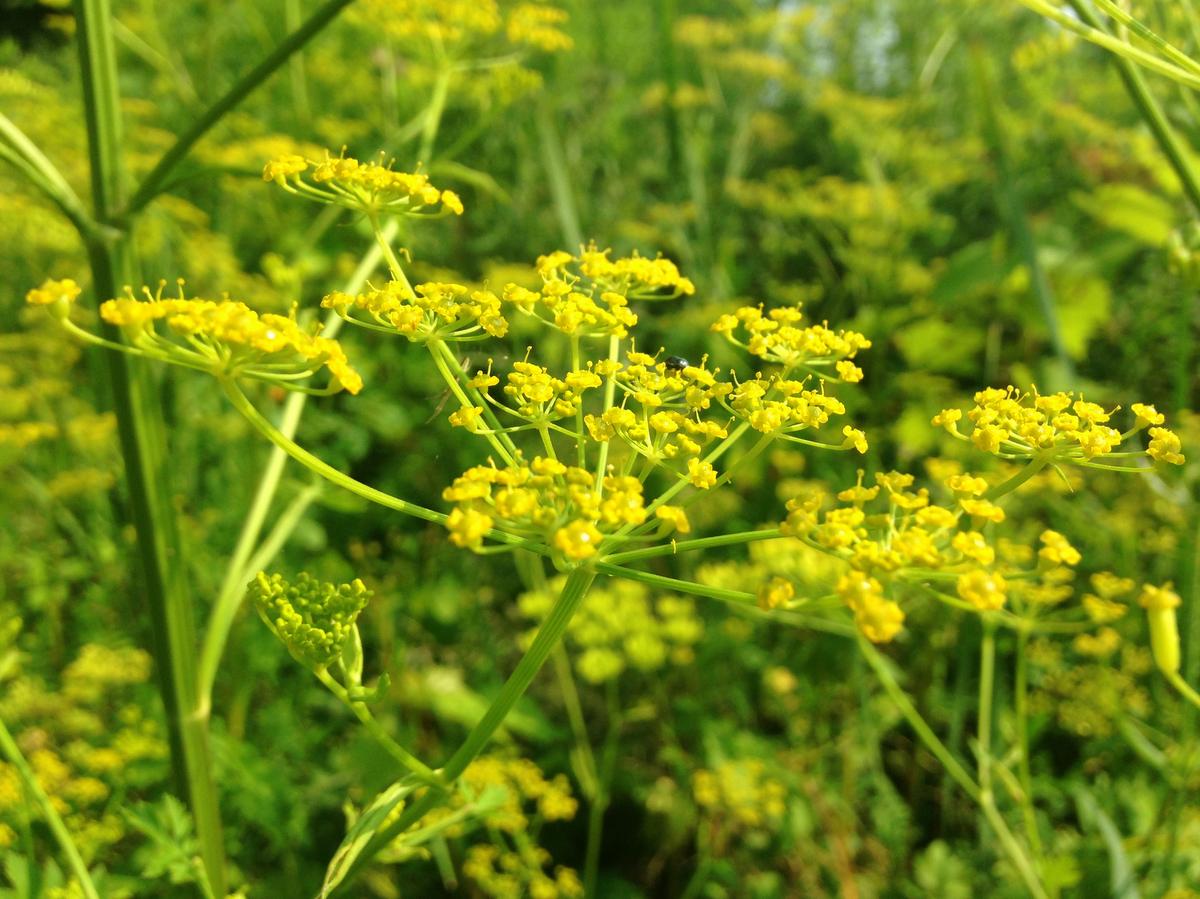The vegetable parsnip (Pastinaca sativa), native to Eurasia, has been cultivated since at least the days of the Romans.
The parsnip came to North America on the ships that carried European colonists here and, like the colonists themselves, it quickly became naturalized in its new environment. This former food crop is now a noxious weed that fills roadsides, abandoned fields, railroad embankments, and fencerows from sea to shining sea.
The botanical family to which the wild parsnip belongs, Apiaceae, contains some of the most poisonous plants in the world; one of them, the poison hemlock (also invasive in New York state), was used to execute Socrates. Wild parsnip roots are edible, but the fruit, stems, and foliage contain high concentrations of toxic chemicals called furanocoumarins. These toxins, which are designed to protect the plant from herbivory, are activated by UV radiation. Even casual contact with a wild parsnip plant, even on a cloudy day, can cause burning and redness of the skin, frighteningly large blisters that may take several days to appear, and darkened scars that sometimes remain for months or years. If rubbed in the eyes, blindness can occur.
Not all animals seem to be as bothered by these toxins as humans are, however. Deer nibble on the leaves of the wild parsnip, birds and small mammals eat the seeds, and cabbage loopers and the larvae of black swallowtail butterflies (also known as parsnip swallowtails) grow fat on the foliage. But one animal in particular feeds exclusively on the wild parsnip and related species: the parsnip webworm, an insect native to the plant’s original range and accidentally introduced into North America in the mid-19th century.
The webworm has gut enzymes that detoxify furanocoumarins, and it also seems to be able to use the carotenoids in the plant material that it ingests to protect itself from UV rays. However, this detoxification process uses valuable resources: the more resources that the worm expends on neutralizing toxins, the fewer it has for everything else. The plant, in its turn, has to confront a similar catch-22: furanocoumarins take a great deal of energy to produce, energy that could otherwise be put into growth and reproduction. In order to try to swing the calculus in its favor, the parsnip is parsimonious with its poison: it deposits the most furanocoumarins in the parts most vulnerable to herbivory (above the ground) and fewer in the roots. When the plant detects a caterpillar chewing on a leaf, it quickly increases the concentration of furanocoumarins in that particular leaf. The plant has another trick for protecting its precious seeds: it produces a large number of “decoy” fruits that contain far fewer toxins but no seeds and fewer nutrients. The webworm, for its part, tastes the plant before taking a bite, looking for the bits with the fewest poisons.
The wild parsnip has become firmly rooted in many areas and climate change may be contributing to its spread. But there’s a silver lining, and a bit of historical irony, to the story: by some accounts, this rogue root vegetable is tastier than its domesticated cousin. Although it has forked rather than cylindrical roots and is a bit tougher and drier, it is also sweeter and more aromatic. Now that old-fashioned vegetables are hip again and foraging for wild foods is popular, the wild parsnip is going through a bit of a culinary renaissance.



